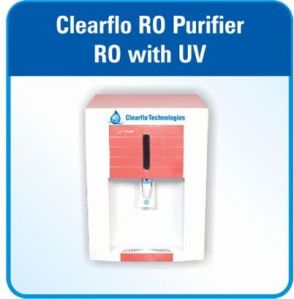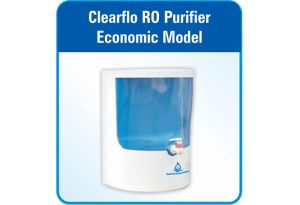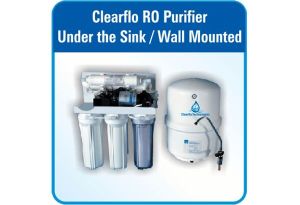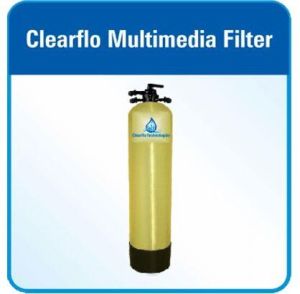
RO Purifier Ro With UV
Item Details Process: This RO+UV(double protection) model had 6 stage purification and imported plastic body. Primary Filtration: Inlet from T joint in your water tap, As the first stage of filtration water enters into antiscalant which improves the life of membrane and goes to five micron Cartridge which removes physical particles in water. The second step of filtration process in activated carbon filter which removes terrible odour and colour then as the third stage better micron cartridge (One micron) which eliminates micro impurities. Principle Filtration: As the fourth stage of filtration water filtered by the membrane with the help of high-pressure pump (for osmotic pressure) which removes excess of minerals from water and same send through reject the pipeline. Post filtration: Final stage of filtration UV (Ultraviolet rays) helps to ensure zero bacteria viruses in output water. Suitable for: Bore water, metro water, municipal water, lorry water and well water. Placeholder: Countertop and wall mounted.
...more
Ro Purifier
Process: This economic model RO has 5 stage purification. Primary Filtration: Inlet from T joint in your water tap, water enters into five micron Cartridge which removes physical particles in water. The second stage of filtration process in activated carbon filter which removes terrible odour and colour then as third stage better micron cartridge (One micron) which eliminates micro impurities. Principle Filtration: As the fourth stage of filtration water filtered by a membrane with the help of high-pressure pump (for osmotic pressure) which removes excess of minerals from water and same send through reject the pipeline. Post filtration: Final stage of filtration post-carbon helps to ensure the filtrated water and makes more purification. Suitable for: Bore water, metro water, municipal water, lorry water and well water. Placeholder: Countertop and wall mounted
...more
Clearflo RO Purifier Water Softeners
Water softeners are specific ion exchangers that are designed to remove ions, which are positively charged. Softeners mainly remove calcium (Ca2+) and magnesium (Mg2+) ions. Calcium and magnesium are often referred to as 'hardness minerals'. Softeners are sometimes even applied to remove iron. The softening devices are able to remove up to five milligrams per litre (5 mg/L) of dissolved iron. Softeners can operate automatic, semi-automatic, or manual. Each type is rated on the amount of hardness it can remove before regeneration is necessary. A water softener collects hardness minerals within its conditioning tank and from time to time flushes them away to drain. Ion exchangers are often used for water softening. When an ion exchanger is applied for water softening, it will replace the calcium and magnesium ions in the water with other ions, for instance sodium or potassium. The exchanger ions are added to the ion exchanger reservoir as sodium and potassium salts (NaCl and KCl).
...more
Clearflo RO Purifier Wall Mounted
Process: This RO+UV(double protection) model has 6 stage purification. Primary Filtration: Inlet from T joint in your water tap, As first stage of filtration water enters into antiscalant which improves the life of membrane and goes to five micron Cartridge which removes physical particles in water. Second stage of filtration process in activated carbon filter which removes bad odour and colour then as third stage fine micron cartridge (One micron) which removes micro impurities. Principle Filtration: As fourth stage of filtration water filtered by membrane with help of high-pressure pump (for osmotic pressure) which removes excess of minerals from water and same send through reject pipe line. Post filtration: Final stage of filtration UV (Ultra violet rays) helps to ensure zero bacteria viruses in output water. Optional: For Fully automatic which requires water storage tank(10 Ltrs). Suitable for: Bore water, metro water, municipal water, lorry water and well water. Placeholder: Under the sink and wall mounted.
...more
Clearflo RO Purifier Iron Removers
Item Details PROCESS Iron is are undesirable in groundwater because of their effect on the appearance and taste of the water, their ability to cause staining, and the health effects of manganese. Iron occur naturally in water, especially groundwater. Neither of the elements causes adverse health effects; they are, in fact, essential to the human diet. However, water containing excessive amounts of iron can stain clothes, discolor plumbing fixtures, and sometimes add a "rusty" taste and look to the water. How iron are removed depends on the type and concentration, and this helps determine the best procedure and treatment system to use. Iron can be present in water in one of two basic forms: dissolved, and suspended. The predominance of one form over another is dependent on the water's pH. The two most common treatment methods are removal by oxidation/filtration and adsorbing. Oxidation involves the introduction of an oxidizing agent which chemically reacts with the iron to form an insoluble particle which can then be physically filtered out through a media bed. Oxidation can be carried out one of the following methods: Aeration - blowing/spraying air through the water Addition of dissolved chemical oxidants - chlorine, chlorine dioxide (KMnO4) Adsorption - Activated carbon.
...moreBe first to Rate
Rate ThisOpening Hours